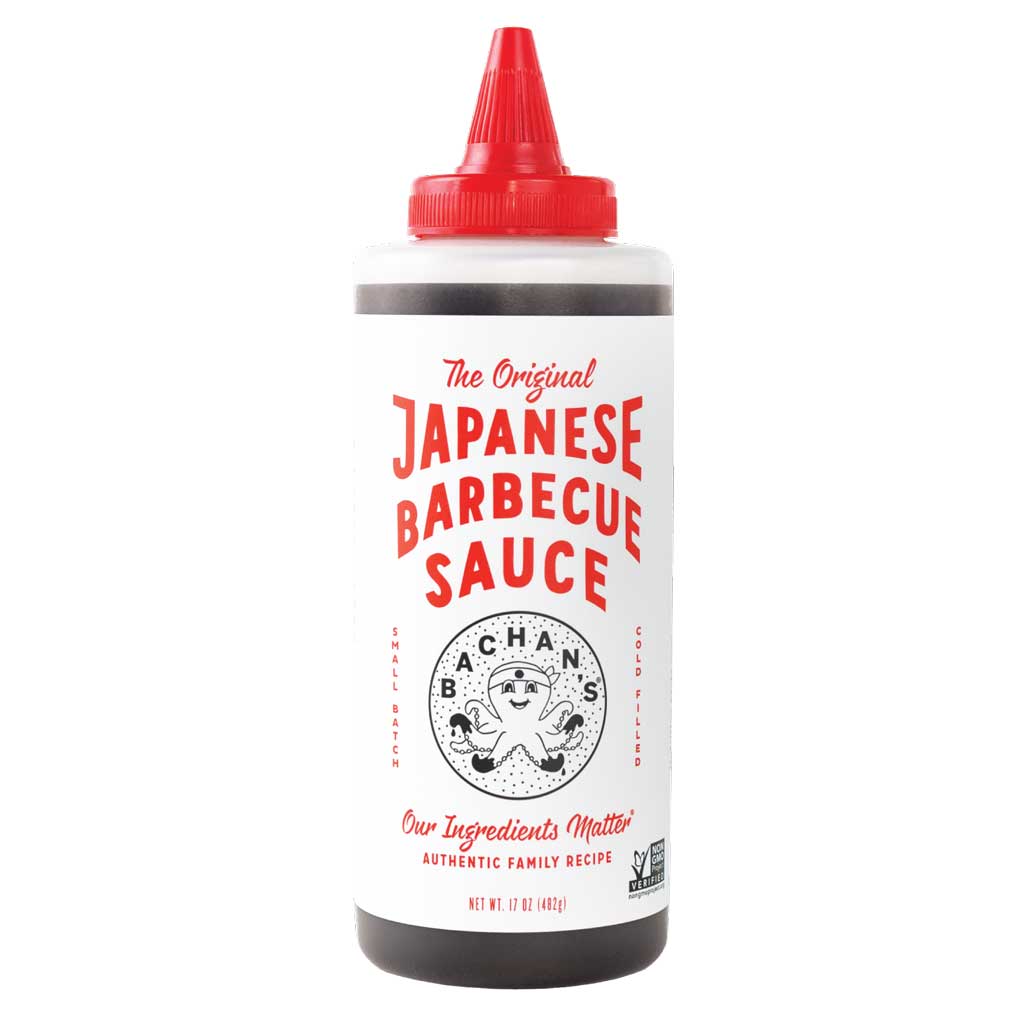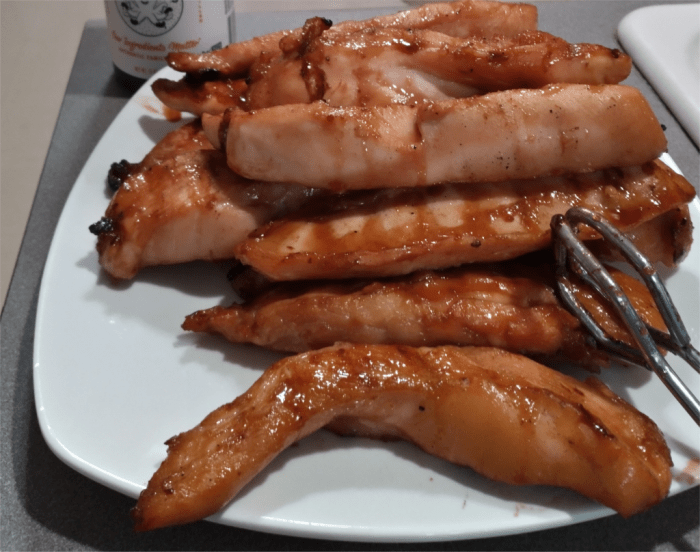Bachans Japanese Barbecue Sauce Recipes
Understanding Bachan’s Japanese Barbecue Sauce: Bachan’s Japanese Barbecue Sauce Recipes
Bachan’s japanese barbecue sauce recipes – Bachan’s Japanese Barbecue Sauce has gained significant popularity for its unique flavor profile and versatility. This section will delve into the key characteristics of the sauce, comparing it to other commercially available options and exploring variations within the Bachan’s product line.
Key Flavor Profiles of Bachan’s Japanese Barbecue Sauce
Bachan’s sauce is characterized by a harmonious blend of sweet, savory, and umami notes. The sweetness typically derives from a combination of sugars, while the savory element is provided by soy sauce and other savory ingredients. The umami depth comes from ingredients like Worcestershire sauce or other similar umami-rich components. A subtle hint of acidity balances the overall flavor profile, preventing it from becoming overly sweet or salty.
The spiciness level varies depending on the specific product line, with some options offering a noticeable kick while others remain mild.
Main Ingredients and Their Roles
While the exact ingredient list varies slightly across Bachan’s product lines, key components consistently contribute to the sauce’s distinctive character. Soy sauce provides saltiness and umami, while sugars (often brown sugar or high fructose corn syrup) contribute sweetness. Worcestershire sauce or similar fermented sauces add depth and complexity, enhancing the umami. Vinegar or other acidic ingredients balance the sweetness and add brightness.
Garlic and ginger provide aromatic notes, while spices (such as chili peppers in spicier versions) add heat. The texture is typically smooth and slightly viscous, reflecting the use of thickeners.
Comparison to Other Japanese Barbecue Sauces
Compared to other commercially available Japanese barbecue sauces, Bachan’s often stands out for its balanced flavor profile. Many other brands might lean heavily towards sweetness or saltiness, while Bachan’s strives for a more nuanced equilibrium. The umami depth is also a distinguishing feature, adding complexity that many competitors lack. The consistency is generally thicker than some other sauces, making it ideal for both marinades and glazes.
Variations in Taste Across Bachan’s Product Line
Bachan’s offers various versions of their barbecue sauce, including original, spicy, and potentially others. The original version typically offers a balanced sweet and savory profile, while the spicy versions incorporate chili peppers to increase the heat level. These variations cater to different preferences, allowing consumers to select a sauce that matches their desired level of spiciness.
Recipe Variations and Adaptations

Source: shopify.com
Bachan’s versatility extends to its adaptability in various culinary applications. This section explores three unique recipes showcasing Bachan’s as a base for different proteins, a marinade, and a dipping sauce, along with methods to adjust its flavor profile.
Recipes Using Bachan’s Japanese Barbecue Sauce
The following recipes demonstrate the adaptability of Bachan’s sauce across different protein types and cooking methods.
- Grilled Chicken with Bachan’s Glaze: Marinate chicken in a mixture of Bachan’s, soy sauce, and ginger. Grill until cooked through, basting with additional sauce during the last few minutes for a glossy finish.
- Beef Skewers with Bachan’s Marinade: Marinate cubed beef in Bachan’s, garlic, and onion for at least 30 minutes. Thread onto skewers and grill until desired doneness, turning frequently.
- Tofu Stir-fry with Bachan’s Sauce: Toss cubed tofu with Bachan’s, sesame oil, and vegetables. Stir-fry until the tofu is browned and the vegetables are tender-crisp.
Bachan’s Marinade Recipe
A simple yet effective marinade can be created by combining Bachan’s sauce with complementary ingredients such as soy sauce, garlic, ginger, and a touch of sesame oil. This marinade is suitable for various grilling methods, including charcoal, gas, and even indoor grilling.
- Combine 1/2 cup Bachan’s sauce, 2 tablespoons soy sauce, 1 tablespoon minced garlic, 1 tablespoon minced ginger, and 1 teaspoon sesame oil.
- Marinate protein (chicken, beef, pork, or tofu) for at least 30 minutes, or preferably overnight for maximum flavor penetration.
- Grill according to your preferred method and desired doneness.
Bachan’s Dipping Sauce Recipe
A flavorful dipping sauce can be created by blending Bachan’s sauce with mayonnaise, sriracha, and lime juice for a creamy, tangy, and slightly spicy accompaniment.
- Combine 1/4 cup Bachan’s sauce, 2 tablespoons mayonnaise, 1 teaspoon sriracha, and 1 tablespoon lime juice.
- Mix well and adjust seasonings to taste.
- Serve with grilled meats, vegetables, or spring rolls.
Adjusting Spiciness and Sweetness
To adjust the spiciness, add more chili flakes or sriracha for extra heat, or use a milder version of Bachan’s sauce. To reduce sweetness, add a squeeze of lime or lemon juice or use a less sweet version of the sauce. To increase sweetness, add a touch of honey or brown sugar.
Culinary Applications Beyond Grilling
Bachan’s versatility extends far beyond grilling. Its rich flavor profile makes it a suitable ingredient in various dishes, enhancing both savory and sweet applications.
Non-Grilling Applications of Bachan’s Sauce, Bachan’s japanese barbecue sauce recipes
Bachan’s can be incorporated into various dishes, adding a unique flavor dimension. It serves as a flavorful glaze for roasted vegetables, a vibrant addition to stir-fries, and a delicious sauce for noodles or rice dishes. Its rich umami and balanced sweetness make it a versatile ingredient in many cuisines.
Suitability for Different Cuisines
Bachan’s sauce, with its blend of sweet, savory, and umami notes, complements a wide array of cuisines. Its versatility allows for integration into Asian-inspired dishes, American-style barbecue, and even some Latin American or fusion cooking styles.
Bachan’s Sauce for Vegetables and Noodles

Source: bowilliams.com
To use Bachan’s with vegetables, toss roasted or stir-fried vegetables with the sauce for a flavorful coating. For noodles, incorporate Bachan’s into a noodle sauce, adding other flavor elements like sesame oil, soy sauce, or ginger for a complex and delicious flavor profile.
Ingredient Pairings for Bachan’s Sauce
The following table showcases potential ingredient pairings that complement Bachan’s sauce’s flavor profile:
| Ingredient | Flavor Profile | Suggested Use | Bachan’s Sauce Pairing Notes |
|---|---|---|---|
| Chicken | Mild, Savory | Grilled, Stir-fried | Enhances natural chicken flavor; creates a balanced sweet and savory profile. |
| Beef | Rich, Umami | Grilled, Stewed | Adds depth and sweetness to richer beef flavors. |
| Tofu | Mild, Neutral | Stir-fried, Baked | Provides savory and sweet notes to enhance tofu’s texture. |
| Broccoli | Slightly Bitter | Roasted, Stir-fried | Balances bitterness with sweetness and umami. |
Homemade Bachan’s Inspired Sauce
While Bachan’s commercially available sauce offers convenience, creating a homemade version allows for customization and control over ingredients. This section provides a recipe for a homemade Bachan’s-inspired sauce.
Homemade Bachan’s Inspired Sauce Recipe
This recipe aims to replicate the key flavor characteristics of Bachan’s sauce using readily available ingredients.
- In a saucepan, combine 1 cup ketchup, 1/2 cup brown sugar, 1/4 cup soy sauce, 2 tablespoons rice vinegar, 1 tablespoon Worcestershire sauce, 1 tablespoon grated ginger, 1 tablespoon minced garlic, 1 teaspoon sesame oil, and 1/2 teaspoon ground black pepper.
- Bring the mixture to a simmer over medium heat, stirring frequently.
- Reduce the heat to low and simmer for 15-20 minutes, or until the sauce has thickened slightly.
- Remove from heat and let cool completely before using.
Ingredient Substitutions and Adjustments

Source: barefootfarmbyron.com
Adjustments can be made to this recipe based on preference. For a spicier sauce, add a pinch of red pepper flakes or a dash of sriracha. For a sweeter sauce, increase the amount of brown sugar. For a tangier sauce, add more rice vinegar. Alternatives to Worcestershire sauce include soy sauce or mushroom broth.
Comparison to Commercial Bachan’s Sauce
The homemade version will likely have a slightly different flavor profile compared to the commercial product due to variations in ingredients and processing methods. However, it will capture the essence of Bachan’s signature sweet, savory, and umami notes.
Visual Representation of Recipes
The visual appeal of dishes using Bachan’s sauce is a key component of the overall culinary experience. This section explores the visual aspects of dishes prepared with Bachan’s sauce.
Visual Appeal of Dishes Using Bachan’s Sauce
Dishes featuring Bachan’s sauce often exhibit a rich, dark brown color with a glossy sheen. The texture is typically smooth and slightly viscous, creating a visually appealing coating on the protein or vegetables. When used as a glaze, the sauce creates a glistening surface that enhances the overall presentation. Proper plating, such as arranging the food on a contrasting background, further accentuates the visual appeal.
Bachan’s Japanese barbecue sauce recipes often feature a delightful balance of sweet and savory flavors. For a unique twist, consider incorporating a complementary fruit-based sweetness, such as the one found in this excellent asian pear sauce recipe , which could add a subtle yet sophisticated depth to your next batch of Bachan’s. The pear’s natural sweetness would enhance the existing profile, offering a refined culinary experience.
Ultimately, experimenting with different flavor combinations is key to mastering Bachan’s recipes.
Visual Aspects of Recipes with Bachan’s Sauce
The glistening quality of the sauce, especially when used as a glaze, adds a visual dimension to the dish. The sauce’s dark brown color contrasts beautifully with lighter-colored proteins or vegetables, creating an aesthetically pleasing presentation. The texture of the sauce, whether thick or thin, also plays a role in the visual appeal. A thicker glaze creates a more pronounced coating, while a thinner sauce provides a more subtle sheen.
Visual Differences Between Marinade and Glaze
When used as a marinade, Bachan’s sauce imparts color and flavor throughout the protein, resulting in a consistent coloration. When used as a glaze, the sauce creates a more pronounced, glossy coating on the surface of the food, enhancing its visual appeal. The difference is subtle yet noticeable, contributing to the overall presentation.
Popular Questions
Is Bachan’s Japanese BBQ sauce gluten-free?
Check the specific Bachan’s product label as gluten-free status can vary by product.
Can I freeze Bachan’s sauce?
Yes, Bachan’s sauce can be frozen for extended storage. Allow it to thaw completely before use.
What is the shelf life of opened Bachan’s sauce?
Once opened, refrigerate Bachan’s sauce and consume within 2-3 weeks for optimal quality.
Can I use Bachan’s sauce in baking?
While not traditionally used in baking, a small amount could add a savory depth to certain recipes. Experiment cautiously.





















